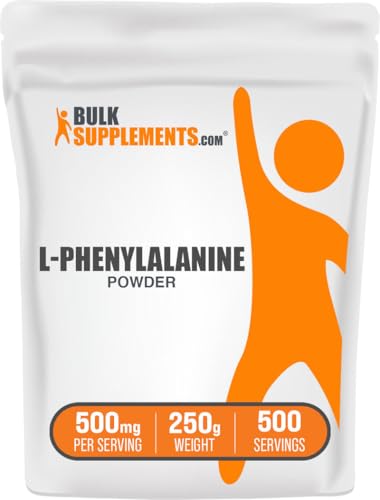L-Phenylalanine & COVID-19: What the Research Says
Quick Summary: A study found that people with COVID-19 had higher levels of L-Phenylalanine in their blood. This suggests L-Phenylalanine might be useful for diagnosing the disease, but it doesn't mean you should take supplements.
What The Research Found
Researchers looked at the levels of different amino acids (the building blocks of proteins) in people with and without COVID-19. They found that people with COVID-19 had higher levels of L-Phenylalanine in their blood. This means that measuring L-Phenylalanine might help doctors diagnose COVID-19. The study also suggested that other amino acids, like taurine and BCAAs, might be helpful in treating COVID-19, but not L-Phenylalanine itself.
Study Details
- Who was studied: 142 people. 112 had COVID-19 (with different levels of illness, from mild to severe), and 30 were healthy.
- How long: The study took a snapshot of amino acid levels at one point in time.
- What they took: Nothing. This study measured the natural levels of amino acids in the blood. It did not involve giving anyone L-Phenylalanine or any other supplements.
What This Means For You
This research suggests that measuring L-Phenylalanine levels might help doctors diagnose COVID-19. However, it does NOT mean you should take L-Phenylalanine supplements. The study found that higher levels of L-Phenylalanine were linked to having the disease. The study suggested that other supplements, like taurine and BCAAs, might be helpful, but not L-Phenylalanine. Always talk to your doctor before taking any supplements.
Study Limitations
- The study only looked at one point in time, so we don't know how L-Phenylalanine levels change over the course of the illness.
- The study can't prove that high L-Phenylalanine causes COVID-19, only that it's linked to it.
- The study didn't provide details about the participants beyond their COVID-19 status.
Technical Analysis Details
Key Findings
This observational study identified significantly elevated serum L-phenylalanine levels in COVID-19 patients compared to healthy controls (p<0.05). L-phenylalanine, alongside L-2-aminobutyric acid, demonstrated biomarker potential for COVID-19 diagnosis. The study concluded these amino acids could aid laboratory diagnosis, with L-2-aminobutyric acid also showing prognostic value for disease course. Notably, the research suggested supplementing taurine and branched-chain amino acids (BCAAs), not L-phenylalanine, might benefit treatment protocols. Elevated L-phenylalanine was associated with infection status, not proposed as a therapeutic supplement.
Study Design
This was a cross-sectional observational case-control study analyzing serum amino acid profiles. Researchers used liquid chromatography-tandem mass spectrometry (LC-MS/MS) to measure 30 amino acids in 142 participants: 112 confirmed COVID-19 patients (stratified as asymptomatic, mild, moderate, or severe/critical) and 30 healthy controls. Severity was clinically assessed per standard protocols. The study captured a single timepoint measurement during infection; no longitudinal data or intervention was applied. Demographics beyond infection severity were not detailed in the provided summary.
Dosage & Administration
Not applicable. This was an observational study measuring endogenous (naturally occurring) serum amino acid levels. No supplements, including L-phenylalanine, were administered to participants. The study assessed baseline metabolic profiles, not therapeutic interventions.
Results & Efficacy
Serum L-phenylalanine levels were significantly higher in COVID-19 patients versus controls (p<0.05), with differences observed across severity groups. The summary states 20 amino acids showed significant alterations, but specific quantitative values (e.g., mean concentrations, effect sizes, confidence intervals) for L-phenylalanine were not provided. Statistical significance (p<0.05) was reported for the group differences, but exact p-values, fold-changes, or sensitivity/specificity metrics for L-phenylalanine as a biomarker were not detailed in the given excerpt. The efficacy claim relates solely to its potential diagnostic biomarker utility, not therapeutic effect.
Limitations
Key limitations include the observational design, which cannot establish causation between amino acid changes and disease pathology. The single timepoint measurement prevents understanding temporal dynamics of amino acid fluctuations during infection. Control group matching details (e.g., age, comorbidities) were unspecified, risking confounding bias. The summary lacks quantitative effect sizes and precise statistical metrics (e.g., exact p-values, AUC for biomarker performance). Future research should validate findings in larger, diverse cohorts, explore mechanisms linking amino acid shifts to pathophysiology, and assess biomarker performance prospectively.
Clinical Relevance
This study suggests measuring serum L-phenylalanine levels could potentially aid COVID-19 diagnosis in laboratory settings, reflecting underlying metabolic disruption during infection. Critically, elevated levels were associated with disease presence; this does NOT support L-phenylalanine supplementation for prevention or treatment. Supplementing L-phenylalanine based on this finding could be counterproductive. The relevant therapeutic implication proposed by the authors involves other amino acids: potential benefits from taurine and BCAA supplementation, not L-phenylalanine. Users should not interpret these results as evidence for taking L-phenylalanine supplements for COVID-19.
Original Study Reference
The serum amino acid profile in COVID-19.
Source: PubMed
Published: 2021
📄 Read Full Study (PMID: 34605988)



